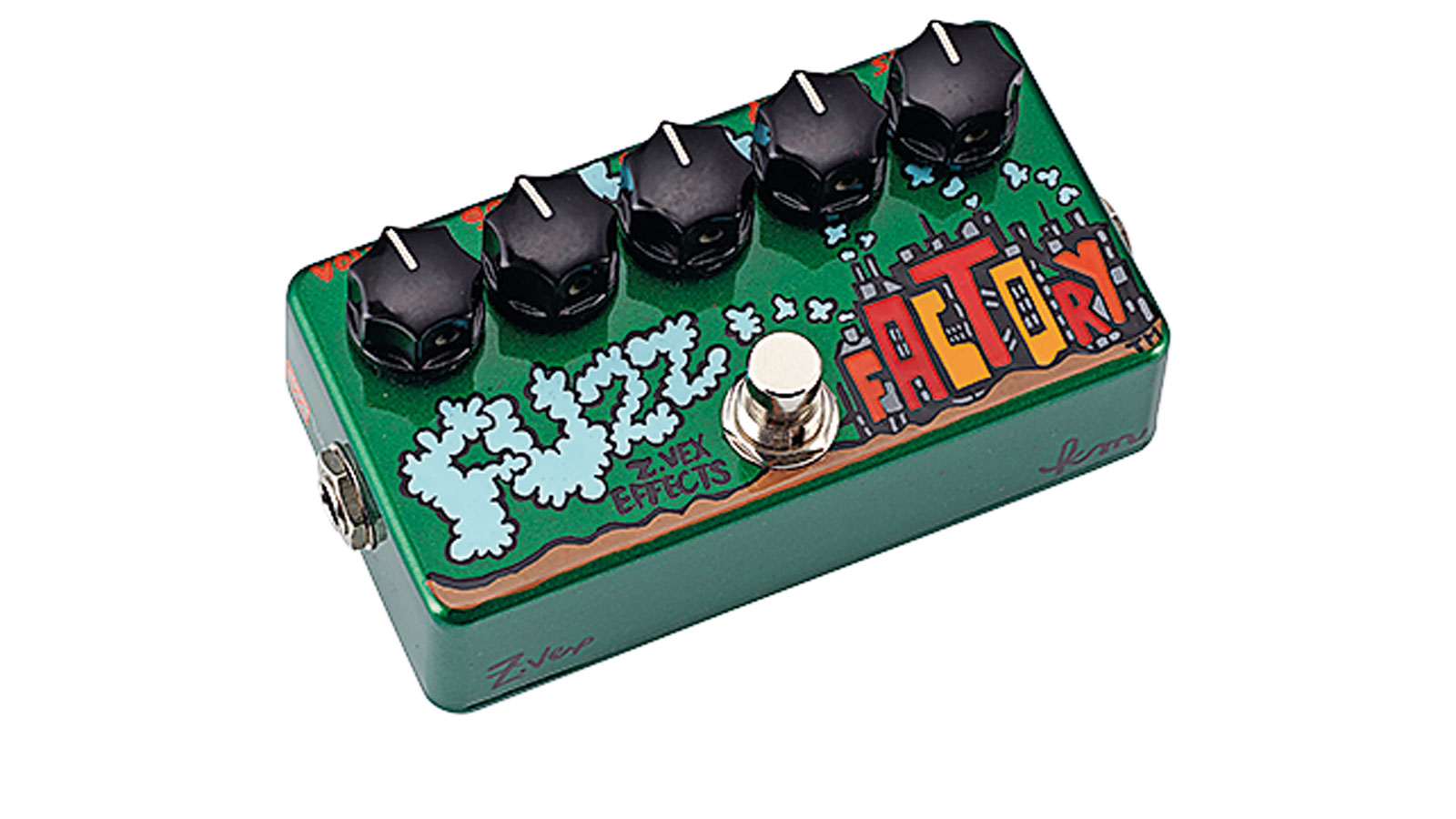MusicRadar Verdict
If you take your fuzz to extremes, get down to the factory...
Pros
- +
Huge tonal manipulation possibilities. Quality build. Hand-painted.
Cons
- -
Expensive. Requires taming!
MusicRadar's got your back
After the obvious classics born in the 60s and 70s, it's fair to say that the Fuzz Factory is the most well-known and celebrated modern fuzz pedal.
"The result is a pedal that needs careful juxtaposition of its knobs to get to the sounds you want"
Launched almost 20 years ago, it was an original (and anarchic) design, when a lot of pedals were emulations of vintage gear, and quite unique in its compact hand-painted form.
What you get is a five-knob fuzz that uses two new old-stock 60s germanium transistors but offers manipulation of the circuitry like no other.
The result is a pedal that needs careful juxtaposition of its knobs to get to the sounds you want, with squeals, howls and feedback along the way while you are getting them that should appeal to sonic adventurers.
Beyond that, it can deliver conventional harmonically rich fuzz, cool resonant droning feedback that you can tune to pitch, and gated staccato madness.
Yes, it can be a beast that needs taming, but it offers probably the widest variety of fuzz-derived sounds in a single pedal.
Want all the hottest music and gear news, reviews, deals, features and more, direct to your inbox? Sign up here.
Trevor Curwen has played guitar for several decades – he's also mimed it on the UK's Top of the Pops. Much of his working life, though, has been spent behind the mixing desk, during which time he has built up a solid collection of the guitars, amps and pedals needed to cover just about any studio session. He writes pedal reviews for Guitarist and has contributed to Total Guitar, MusicRadar and Future Music among others.

